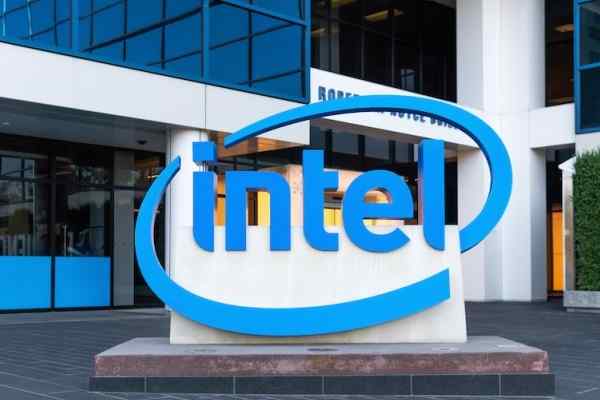Mumbai: Intel‘s 7nm chip-making has been further delayed by more than a half year, the Mountain View, California based company revealed during the second-quarter earnings last week. Despite, Intel’s second-quarter earnings being higher than market estimates, the holdup in 7nm chip-making has pushed the company into an overdrive mode.
Chief Engineering Officer’s exit
Intel fired its Chief Engineering Officer, Murthy Renduchintala on Monday over the 7nm chip-making delay debacle. And the CEO even had to re-shuffle top executives and restructure a technology unit that Renduchintala headed during his five year-stint at Intel.
This clearly shows how significant was the former Qualcomm executive Renduchintala’s role at Intel and on its future technology product strategy.
Intel CEO takes control
Intel CEO Bob Swan on Monday announced changes to the company’s technology unit and executive team with the aim to speed-up product development, improve focus and accountability in process technology execution.
Swan has disintegrated the Technology, Systems Architecture and Client Group (TSCG) into different teams having leaders that will directly report to the CEO.
Technology Development
Dr. Ann Kelleher will lead the Technology Development. Kelleher is Intel’s manufacturing head for past many years but now she will lead Intel’s technology development focusing on 7nm and 5nm processes.
Intel’s CTO Dr. Mike Mayberry will consult and assist in the transition until his planned retirement at the end of the year. Mayberry has been with Intel for over three decades and has a track record of innovation with key contributions in technology development and also as the leader of Intel Labs.
Manufacturing and Operations
Keyvan Esfarjani will lead the Manufacturing and Operations. Esfarjani was recently in-charge of manufacturing for Intel’s Non-Volatile Memory Solutions Group (NSG) but now will lead global manufacturing operations and continue to support Kelleher’s work driving product ramp and the build-out of new fab capacity.
Design Engineering
Josh Walden will lead the Design Engineering on an interim basis till Intel finds a permanent leader. Walden is a proven leader in technology manufacturing and platform engineering and been leading the Intel Product Assurance and Security Group (IPAS), which will continue to report to him.
Architecture, Software and Graphics
Raja Koduri will lead the Architecture, Software and Graphics. Koduri has responsibility for driving the development of Intel’s architecture and software strategy, and dedicated graphics product portfolio. Under his leadership, Intel will continue to invest in software capability as a strategic asset and further build-out software engineering with cloud, platform, solutions and services expertise.
Supply Chain
Dr. Randhir Thakur will continue to lead the Supply Chain. Thakur will report directly to the CEO as chief supply chain officer, recognizing the ever-growing importance of this role and Intel’s relationships with key players in the ecosystem. Thakur and his team will ensure the supply chain is a competitive advantage for Intel.
“I look forward to working directly with these talented and experienced technology leaders, each of whom is committed to driving Intel forward during this period of critical execution,” said Swan.
Renduchintala has been held accountable largely for the delay in 7nm chip-making and will leave the company on August 3. But Intel CEO did thank him and his role in transforming Intel’s technology platform.
“I also want to thank Murthy for his leadership in helping Intel transform our technology platform. We have the most diverse portfolio of leadership products in our history and, as a result of our six pillars of innovation and disaggregation strategy, much more flexibility in how we build, package and deliver those products for our customers,” added Swan.
Now with separate units and a new executive team in place – the key question remains. Will Intel fill in the void left behind with Renduchintala’s exit and succeed in 7nm chip-making and other products?
But even with this major shakeup and restructuring, Intel’s woes on the 7nm chip-making front are far from over. As the company is battling on two fronts – the investors and the rivals respectively.
On the investors front. Although Intel had a strong second-quarter, investors are disappointed with the debacle over the 7nm chip manufacturing delay and next quarter’s guidance. This led to a market fall of over $40 billion for Intel last week. Also, Intel recently lost Apple – one of its oldest customers to UK based ARM.
On the competition front. With the likes of AMD and Nvidia, Intel is losing its ground, particularly on the 7nm chip-making and other new technology products. Because unlike its rivals, Intel designs, processes and manufactures its entire portfolio of processors.
And that’s where Intel has challenges of mass-scale processing and manufacturing, managing supply chain and introducing timely new products. In the current scenario, Intel is facing more technical and supply chain challenges.
But that’s not the case with AMD, Nvidia and others. They design their own silicon chips but outsource the manufacturing processes to partners like Taiwan Semiconductor Manufacturing Company (TSMC).
TSCM is one of the largest silicon foundry and contract chip marker globally. The outsourced model in the silicon chip manufacturing is helping AMD, Nvidia and other players over the past some years.
AMD has been leveraging TSCM to edge out Intel on some of its chips and increasing the market share. And probably, Intel will explore the contract manufacturing or outsourced route for some chip models from a wider product portfolio.
This may help Intel solve its manufacturing problem but at the same time, it helps Intel to regain the market grip and dominance.
Having said that Intel is in a transition phase. Over the years, Intel has been making chips for PCs. But now it is moving into the space of mobile devices, datacentres, Cloud and Edge computing. And that’s a huge business opportunity for Intel and to make most it in the future ahead.

